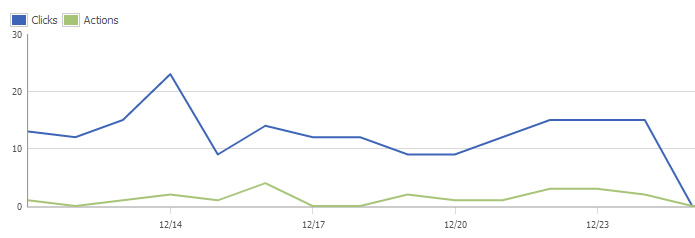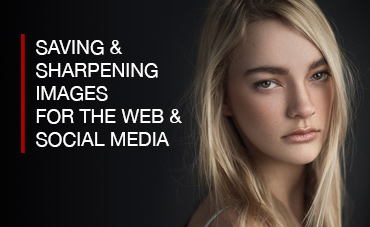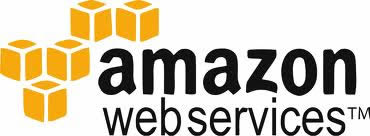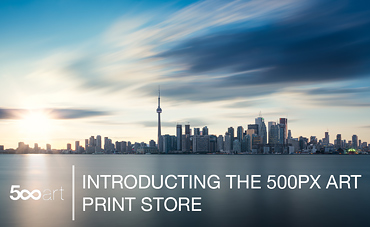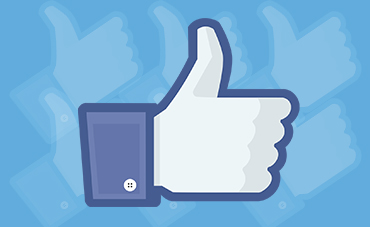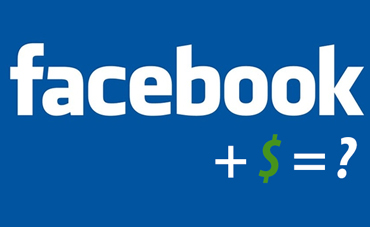 Facebook’s great claim and the reasoning behind their lofty IPO valuation was that they allow advertisers to specifically target their audience by amassing a huge amount of information about their users likes and interests. When you set up a Facebook ad you quickly learn that this claim is indeed true. During the creation of the ad you’re able to drill down to a very fine grained level by filtering Geographically (to a certain city even), to certain interests (say someone that likes photography) or to a certain status (e.g. engaged) and much more. While the targeting criteria is vast, the real question is whether it brings any actual benefit and is thus actually worth paying for. The answer to the question really depends on what genre of photography you are in and what you’re trying to accomplish.
Facebook’s great claim and the reasoning behind their lofty IPO valuation was that they allow advertisers to specifically target their audience by amassing a huge amount of information about their users likes and interests. When you set up a Facebook ad you quickly learn that this claim is indeed true. During the creation of the ad you’re able to drill down to a very fine grained level by filtering Geographically (to a certain city even), to certain interests (say someone that likes photography) or to a certain status (e.g. engaged) and much more. While the targeting criteria is vast, the real question is whether it brings any actual benefit and is thus actually worth paying for. The answer to the question really depends on what genre of photography you are in and what you’re trying to accomplish.
Let’s start with the scenario that you are a landscape, architecture or nature photographer and are targeting people that simply like photography in an effort to increase the number of “likes” on your page. I ran this sort of test for a few weeks to see what the result would be and overall my findings are negative. First off, you can expect your cost per click to run between 15 and 40 cents depending on the day (and presumably the demand for similar ads). Essentially what this means is that each time someone clicks on the ad and gets taken to your Facebook page, you get charged. There is an option for paying by the number of impressions but in general I would advise against this since your goal is to get people to your page and simply having the ad displayed does nothing for you. Where things got interesting was looking at the trend of clicks vs. actions. Facebook defines an “action” as someone doing something on your page such as liking a photo, commenting on a status, liking your page, etc. As part of the ad manager, you’re presented with a graph that looks like this:
This graph basically shows you how many clicks you’ve gotten and how many actions were taken during each day. As you may have already figured out, you want the green and blue lines to be as close together as possible because that means that the people that are clicking on your ad (and costing you money) are doing something that helps you (taking an action). You may have also realized that the above graph really sucks. The lines are far apart and the number of actions is very low. This is a snapshot of the ad report towards the last week of my advertising test. Sadly I didn’t screen capture the same graph at the outset of my test (Facebook only displays the recent info in this form) but I can tell you from the statistics that the lines were nearly inverted. In the first month, the ratio was almost 3 actions for each click, a very nice ratio indeed. From a ratio of clicks to page likes, the first few weeks saw an average of 1 page like for every 3 clicks which resulted in a “cost per like” of about 50 cents. As we approached the last few weeks of the test the ratio became much more grim. Only an average of 1 in 8 clicks resulted in a page like, and with a higher cost per click, the “cost per like” rose to $2.00. This can mean one of two things: either the overall quality of my page content dropped dramatically, or that the number of people that are engaged or interested in my content was largely used up in the early weeks of the test . Given that my content was rather consistent throughout the period, I would assume that it’s the latter rather than the former. It can therefore be deduced that if you plan to undertake a Facebook ad of this form, aim for a 4 week time frame and then turn it off. A $5-$10 daily budget for a month is about the most you would want to invest. Also keep in mind that the number likes will invariably be different depending on the content on your page.
Now that we’ve looked at how costs translate to page likes, the important thing to look at is the engagement of those users with your content after liking your page. In other words, how do the users brought to your page via the ad vary from those that liked it via organic means. Ultimately a like on your page means little if that user never engages with your content in the future. What I did to determine this was maintain a list of users that liked the page as a result of the ad and then cross referenced a good chunk of future likes and comments with that list, and the results were once again poor. Of those that liked the page via the ad, only a small fraction engaged with future content while those that liked it via organic means tend to engage (comment, like posts, etc.) quite frequently. There’s a reason for this and it’s a result that I hypothesized about two weeks into the experiment. Every time I got a like, I would visit the users page and noticed a common trend, those users had also like hundreds or even thousands of pages as well. Therefore, it can be expected that for the most part, those that like pages via ads are those that aren’t very selective with their “likes” and simply just like a lot of things. This isn’t really a problem but where it makes the “like” less valuable is that your future posts are diluted by all the other posts that user sees, and in fact your post may never reach them due to Facebooks post filtering mechanisms. As a result, the likes end up serving as little more than a vanity metric and provide little future benefit. When you’re first starting your page, collecting likes even as vanity metrics can serve some benefit as it provides endorsement for your brand but I caution you to take this route if your page already has a loyal organic following. The important thing to always keep in mind is that you need to be able to build a business case for spending money on advertising. There has to be an ROI (return on investment) otherwise you’re wasting money that would be better spent elsewhere. For me this was experiment was designed to validate Facebook as a prospective marketing channel, and in my experience it was unsuccessful. This doesn’t mean that for your line of business it won’t be effective. In fact I encourage you to try it for yourself, but when you do, set a specific total budget, time period and goals, and then benchmark against those goals to see whether it’s bringing in the benefits you want. Don’t collect likes for the sake of having them. If the money you spend doesn’t help to drive your business then it’s not worth spending.
While I’ve been somewhat negative here, and I’m only speaking from my experience, the one group of photographers that I can see Facebook ads being useful for is wedding photographers. The reason for this is that there is a very clearly defined group of users to target (those that are women, engaged and living in your service area) and because there is an easy and direct way to measure the cost of customer acquisition. If you spend $1000 on Facebook ads and book 3 weddings at $4000 a piece, then it may indeed be worth it. You’re not seeking out likes, you’re directly trying to get business. I see this as a good complement to Google Adwords because with AdWords you’re making yourself known at the time that a user searches for say “wedding photographer Los Angeles”, while with Facebook, your ad is there before they even begin looking. Because of this high degree of targeting and the potentially large transaction from booking a wedding, it makes sense that a wedding photographer would at least try this marketing channel and see if it works for them.
Unfortunately, the above strategy doesn’t translate to more vague groups like targeting actors for headshots, architects for architecture photos, etc. The groups are simply not as well defined and thus, a pull strategy like AdWords becomes more effective.
In a future post I’ll discuss my thoughts on things like promoted posts as well as a better strategies for acquiring page likes. My goal with this post was not to discourage you from trying Facebook ads. It was simply to provide you with my findings so you can be aware of some pitfalls and things to be cognizant of when you try it for yourself.


